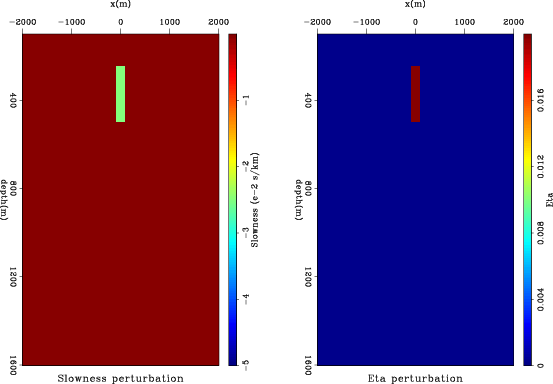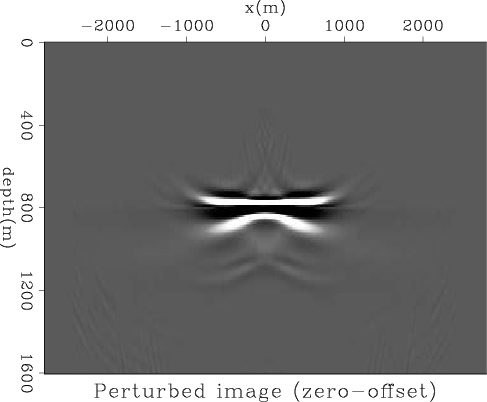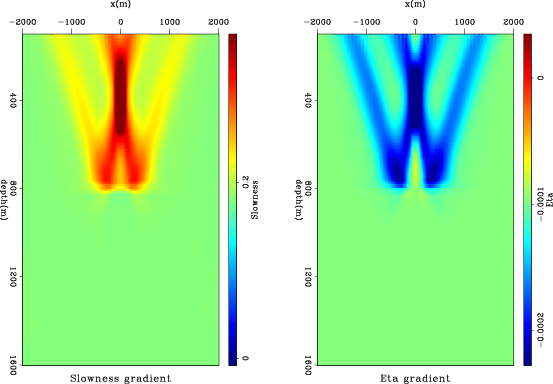|
|
|
|
Wave-equation tomography for anisotropic parameters |
Figure 2 shows the model perturbations, with a rectangular slowness anomaly that is 10% lower than the background slowness on the left, and a rectangular anisotropic anomaly on the right. The perturbation in ![]() within the rectangular block is constant (
within the rectangular block is constant (
![]() ).
Figure 3 shows the perturbed image at the zero lag of the subsurface offset due to the model perturbations after applying the forward WETom operator. Adjoint WETom operator back-projects the perturbed image into the model space, and outputs the gradient for the model perturbation, as shown in Figure 4. Comparing Figure 2 and Figure 4, we can see that the gradients provide the correct direction and shape of the perturbation to conduct a line search in a given inversion scheme.
).
Figure 3 shows the perturbed image at the zero lag of the subsurface offset due to the model perturbations after applying the forward WETom operator. Adjoint WETom operator back-projects the perturbed image into the model space, and outputs the gradient for the model perturbation, as shown in Figure 4. Comparing Figure 2 and Figure 4, we can see that the gradients provide the correct direction and shape of the perturbation to conduct a line search in a given inversion scheme.

|
|---|
|
background
Figure 1. Background isotropic model. Left is the velocity model with one reflector, and right is the |
|
|

|
|---|
|
perturb
Figure 2. Model perturbations. Left is a rectangular slowness anomaly that is 10% lower than the background slowness , and right is a rectangular anisotropic anomaly with a constant value of |
|
|
|
Dimage
Figure 3. Perturbed image from the forward anisotropic WETom operator. The image is extracted from the zero lag of the subsurface offset. |

|
|---|---|
|
|

|
|---|
|
Dmodel
Figure 4. Back-resolved gradient for the model updates. Left is the gradient for slowness, and right is the gradient for |
|
|
|
|
|
|
Wave-equation tomography for anisotropic parameters |